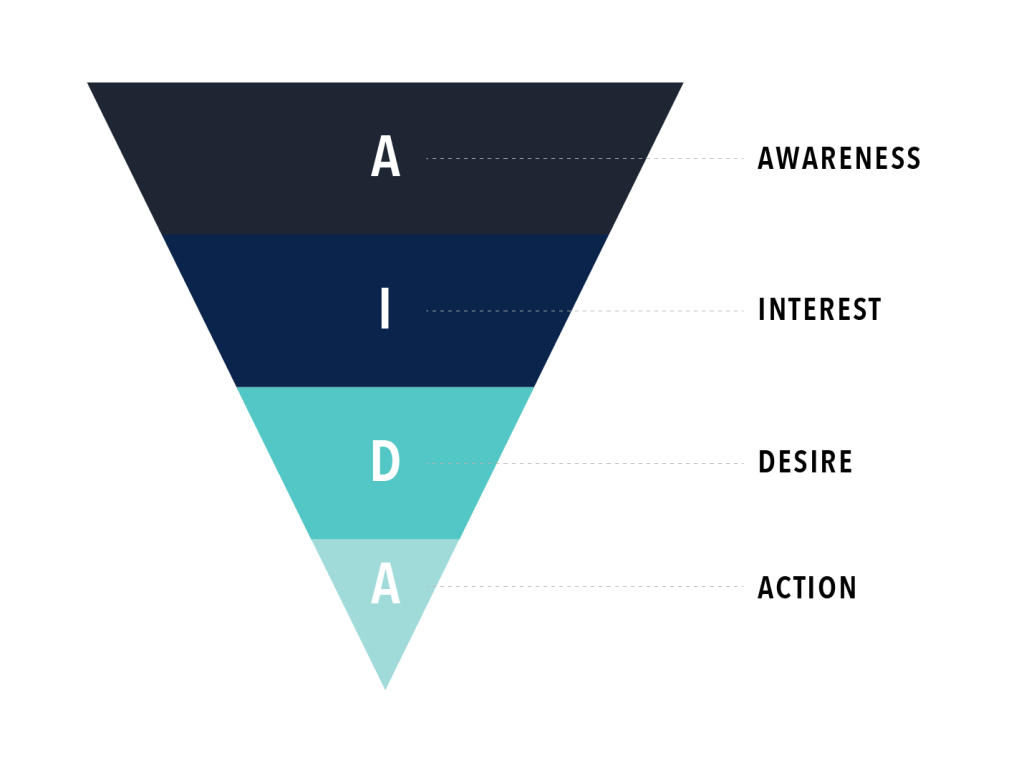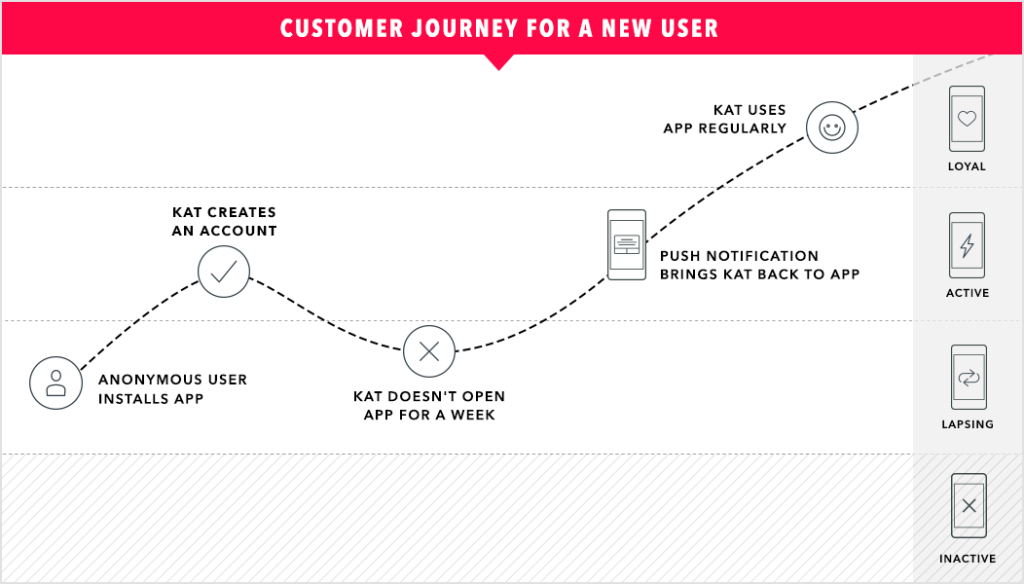Every Mobile Customer Is Unique—And So Are Their Customer Journeys
Published on March 02, 2016/Last edited on March 02, 2016/7 min read


Todd Grennan
Content Production Principal, Content Marketing at BrazeWhen someone first downloads your app, visits your website, or stops by one of your brick and mortar locations, that’s an opportunity. Engage them successfully and you could make a sale, even gain a loyal customer. But if they don’t like what they see or how they’re treated, you may never see them again.
Brands have long relied on the traditional marketing funnel to help them understand and manage their customers’ journeys. But that linear path from customer awareness to conversion doesn’t fully convey the realities of what that journey looks like today. The rise of new technologies and approaches to communication—particularly mobile and social media—has given brands more ways to reach potential customers, but it’s also added an incredible amount of complexity to the customer journey.
It’s time to move past the funnel and embrace today’s customer journey. Are you ready?
The marketing funnel

Back in 1898, an advertising innovator named St. Elmo Lewis (yes, that was his real name) came up with something that would influence generations of marketers. The AIDA model gives marketers a way to chart their customer’s progression toward a purchase—or other conversion—in a clear, linear way. This model, which has been depicted as a funnel since the 1960s, made it easier for brands to ensure that their marketing successfully spoke to people in each of the model’s four stages:
- Awareness
- Interest
- Desire
- Action
When the AIDA model was created, those four stages pretty well described the average process behind a conversion. A customer discovers that there’s such a thing as a ballpoint pen (patented in 1880), becomes interested in how it works and its possible benefits, decides that they want one, then goes out and buys it. But while that linear depiction makes it easy for marketers to understand and act on the funnel, it also limits its usefulness. Why? Because it doesn’t match the way customers actually act today.
The new customer journey

The world has changed. Today’s customer journey isn’t a straight line and it’s not about a single purchase, either. Acquisition is still important, but the high cost of gaining new customers has made engaging and retaining the customers you already increasingly essential. To stay competitive, brands need to build strong, durable relationships with their customers—and that means understanding and responding to each customer’s unique journey across the full range of platforms and messaging channels.
At Appboy, we’ve found that when you’re looking to understand how customers are engaging with your brand post-acquisition, it makes sense to think of them in terms of four basic lifecycle stages:
- Loyal: Strongly and consistently engages with your brand, and supports your monetization efforts
- Active: Regularly engages with your brand via your app, website, or physical locations
- Lapsing: Becoming less active on your app or website, and less responsive to your outreach
- Inactive: No longer visiting your app, website, or otherwise engaging with your brand
While a customer might indeed pass through all four of these stages, it’s not likely to be a linear progression. Someone could check your app every day and make in-app purchases (loyal), begin logging sessions on a less regular basis (active), go two weeks without using the app (lapsing), stop using it completely (inactive), and then begin checking the app again consistently (active) after being brought back by a well-designed push notification. If you treat members of your audience like they’re in a marketing funnel that they either progress down or fall out of, you’ll miss major opportunities to re-engage, retain, and monetize customers. That’s going to hurt your brand over time.
What marketers need to know about each stage of the customer journey
Inactive users
These users have disengaged completely from your brand. Maybe they tried your app once and then never returned; maybe their engagement lessened slowly over time before falling off to nothing. Some of these customers are likely gone for good, but others can be enticed back with the right outreach strategy.
Signs that a user is inactive:
- Stops responding to your messaging
- Has stopped opening your app or visiting your website
- Marks your emails as spam
- Uninstalls your app
Re-engaging an inactive user isn’t easy. People are creatures of habit, and once someone has fallen out the habit of engaging with your brand’s app or website, they’re disinclined to return. It’s worth using the messaging channels at your disposal to try and re-engage these customers, but don’t overdo it. Continuing to send outreach to stubbornly unresponsive customers is likely a wasted effort and can hurt your ability to reach engaged users via email.
How to communicate with inactive users:
- Use push notifications or email (or both, if possible) to engage these customers, who are beyond the reach of in-app/in-browser messages and News Feed Cards
- Include personalized messaging to make the outreach feel engaging and responsive, instead of like a generic blast
- Offer a compelling incentive to return (such as a discount or access to special app features) that reinforces the value that your brand can provide
Lapsing users
A lapsing user has one foot out the door. They’re still visiting your website or logging sessions on your app, but not consistently enough to lead to strong long-term retention.
Signs that a user is lapsing:
- Dials back how often they visit your app or website, compared to previous behavior
- Has not explored your app or website beyond their most basic features
- Stops engaging regularly with your outreach
While not every lapsing customer can be enticed back into active status, the fact that they’re still visiting your brand’s digital presence and engaging with some messages gives you more options and a better chance to retain them. Plus, by taking action when customers are first beginning to lapse, you can reduce the odds that they become inactive and even harder to re-engage.
How to communicate with lapsing users:
- Use multiple messaging channels (such as push, email, in-app messages, and News Feed Cards) to increase the chances that recipients receive the message in a way that engages them
- Take advantage of personalization to make the outreach feel more intimate and to demonstrate your brand’s understanding of their customer experience
- Highlight new features in your app or on your website that they’re missing out on by not visiting more regularly
Active users
These users are engaged with your brand right now—but that’s no guarantee that they’ll be active a month from now.
Signs that a user is active:
- Visits your app or website regularly
- Has enabled push notifications and/or subscribed to your email list
- Has tried out app and website features, including advanced ones
- Often engages with your brand’s messages
If someone’s an active user, the odds are good that they’ll be open to receiving your outreach, as long as that outreach is relevant to their interests and provides clear value.
How to communicate with active users:
- Create automated campaigns triggered by user actions to nudge customers toward conversions and even more consistent engagement with your brand
- Take advantage of the data you’ve collected on these customers’ in-app and web behavior to individually customize the messages you send using personalization.
Loyal users
These users are more than just regular visitors to your app or website—they’re the pillars that will support your brand’s future success.
Signs that a user is loyal:
- Makes regular purchases in your app or through your website
- Signs up for premium tiers or pays for upgrades
- Promotes your app on social media
- Has rated or reviewed your app
When you have users who demonstrate their commitment to your brand through frequent, consistent engagement and make purchases, or otherwise support your monetization efforts, it’s easy to get complacent. But brands can see even more value if they nurture these relationships by rewarding their loyalty.
How to communicate with loyal users:
- Use in-app messages and News Feed Cards to engage regularly with these customers in non-intrusive ways
- Recognize their loyalty by offering special discounts or other treats when they hit engagement milestones (such as a year using your app, for example) that incentivize additional purchases or upgrading to premium tiers or subscriptions
- Encourage them to serve as brand evangelists by prompting them to rate your app, post reviews in Apple’s App Store or Google Play, or take part in a referral program that rewards them for introducing new people to your brand

Related Tags
Releated Content
View the Blog
The new inbox reality: How iOS changes are reshaping email marketing

Aparna Prasad

Experience optimization: Turning data insights into better journeys

Team Braze

December 2025 Bonfire Marketer of the Month: Jagex’s Emma Oliver
